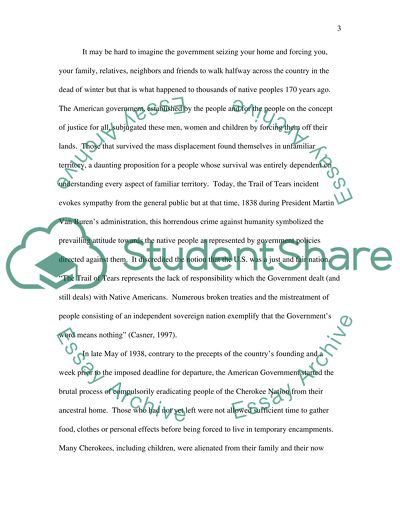Cite this document
(“The Trail of Tears Essay Example | Topics and Well Written Essays - 2250 words”, n.d.)
Retrieved from https://studentshare.org/miscellaneous/1541524-the-trail-of-tears
Retrieved from https://studentshare.org/miscellaneous/1541524-the-trail-of-tears
(The Trail of Tears Essay Example | Topics and Well Written Essays - 2250 Words)
https://studentshare.org/miscellaneous/1541524-the-trail-of-tears.
https://studentshare.org/miscellaneous/1541524-the-trail-of-tears.
“The Trail of Tears Essay Example | Topics and Well Written Essays - 2250 Words”, n.d. https://studentshare.org/miscellaneous/1541524-the-trail-of-tears.


